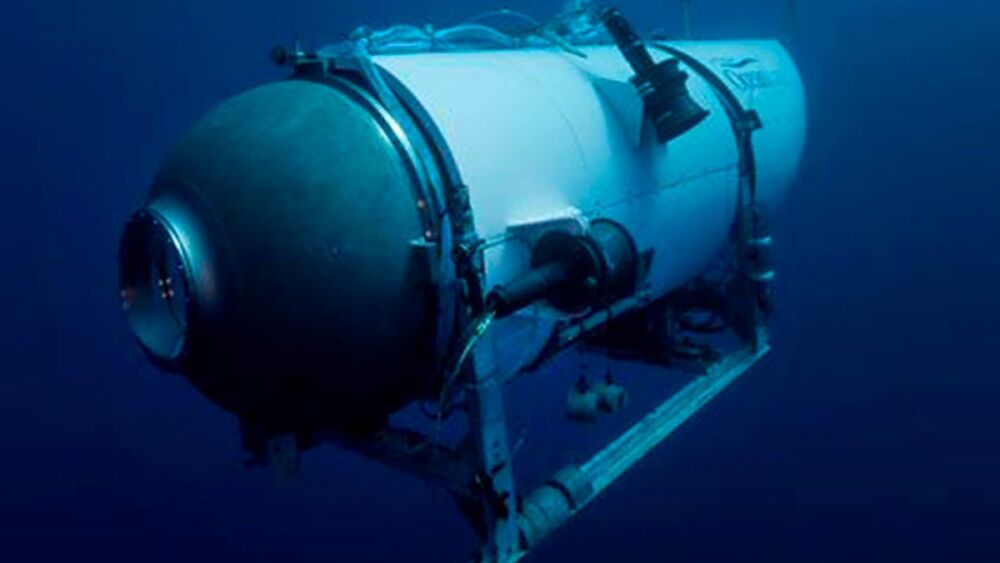Imagine the desperation weighing on the rescuers as they search for the Titan submersible in the North Atlantic Ocean. As they search a wide birth of watery territory covering over 10,000 square miles as deep as 2.5 miles below the surface, the potential is high for strong ocean currents to carry the potentially disabled 23,000-pound carbon fiber and titanium submersible far off course. But even as the search area expands, there is hope: Sonar-capable aircraft detected an intermittent knocking noise but has not yet been able to pinpoint its location.
The sense of urgency is obviously palpable not only for the rescuers but also the individuals aboard the submersible, knowing their air supply is dwindling. Every second counts.
Whether a firefighter or fire chief, you can likely relate to this feeling of desperation – some of us on a routine basis. Have you experienced that feeling? When a family member is adamant their loved one is still inside a home you’re searching – searching to no avail. When neighbors point to the window where they saw the kids screaming for help while the apartment burns around them, yet your initial, secondary and tertiary searches reveal no one.
We train for the worst and hope for the best. Sometimes, hope is all we can lean on.
Painful decisions
We don’t train for people to die – functionally or metaphorically. Functionally, we train to save lives and make positive differences for the people we serve. Metaphorically, we don’t train very well to cope with the deaths we cannot stop. For most first responders, the notion that we won’t find them or that we must switch from rescue to recovery mode is a difficult pill to swallow.
Consider the similarities to the desperation firefighters felt during the 1999 Worcester (Massachusetts) Cold Storage and Warehouse Co. fire. The six-level, 300,000-square-foot, 93-year-old windowless building would ultimately take the lives of six Worcester firefighters.
The first three firefighters radioed that they were in trouble but weren’t sure where they were in the building. Three more firefighters were sent in to find them. That second crew of three firefighters also became lost and were unable to get out. District Chief Mike McNamee made the heart-wrenching decision to not send additional firefighters inside the structure, knowing they would likely meet their end. This unimaginable act of leadership still weighs heavy on the minds of many firefighters today.
Now, think about those neighbors I mentioned earlier – the ones who were adamant about two kids at a window. That’s my personal nemesis incident. As the fire was winding down, I was the fourth supervisory team sent in to find two children – children whom the neighbors watched clawing at the third-floor apartment windows for help. Before making the trek upstairs, I met with the neighbors who had seen the children. They relayed the painful details of the kids screaming and clawing and pointed to exactly the window where they saw them – something the previous three experienced search teams also knew. While we ALL held out hope that some pocket of refuge would have been found, we also knew that too much time had likely passed.
Later, after digging through multiple layers of debris, I was the one to find the lifeless bodies of these two precious children. While this experience has weighed heavy on me for more than 30 years, it has also been my motivation to work with our communities on community risk reduction and evacuation planning, and to work harder to make a difference, even when those vital seconds may have expired.
We each cope with death and destruction differently, and each of our organizations have different mechanisms to help us cope. It is rarely healthy – at least in the long term – to bottle it all up and keep moving on. Yes, sometimes that may be the short-term need; however, expressing feelings and rationalizing the responsibility you feel in these instances can be an important and healthy part of your return to your baseline. If you need to exercise that expression, I ask that you not turn to the vices that many of us use for coping. Instead, reach out for assistance – there are a multitude of options.
Exhaust all options
While the five people aboard the Titan submersible likely knew the dangers of their trip below the surface, I’m sure none of them expected anything other than a safe return to the surface. Now, as air supply falls with every passing tick of the second hand, these five individuals await rescue from crews watching that same clock.
Much like the firefighters at our apartment fire, it’s safe to say that we ALL are hoping for the best; however, we also know that the complexity of this situation will make a speedy recovery something just shy of a miracle. No matter, the rescuers push forward. Just like we as firefighters push forward whenever possible. We rely on our training to do our best every time until all options are exhausted. It is in that spirit and our nature to do our best, hope for the best where we can’t do more, and to be ready to make difficult decisions when appropriate.
We continue to hope for the best in the North Atlantic as every second counts.
Read more:
Why are warnings often unheeded?
What public safety can learn from the Titan submersible disaster














